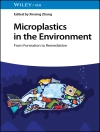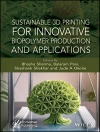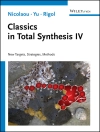Building upon the previous volumes,
The Chemical Biology of Sulfur,
The Chemical Biology of Phosphorus, and
The Chemical Biology of Nitrogen, this book examines the organic chemistry of life,
The Chemical Biology of Carbon. It examines chemical biology open to carbon-containing natural metabolites that allow both retrospective and predictive behaviours of both biosynthetic and degradative metabolism in primary and secondary pathways. This book also notes the centrality of a core set of heterocycles in metabolites and coenzyme forms of vitamins and how that chemistry enables life. The organic chemical fundamental considerations are always tied to specific metabolites and metabolic transformations. This context makes this volume not a classical organic or even bioorganic approach to organic chemistry
in vivo but instead a unique analysis of how the rules and reactivities of organic chemistry underlie the organic chemistry of life.
The Chemical Biology of Carbon is an ideal reference and guide for medicinal chemists, chemical biologists, organic chemists as well as postgraduate, graduate and advanced undergraduate students in these areas and related disciplines.
Cuprins
Introduction to Carbon Chemical Biology; Olefin and Alkyne Functional Groups; C–O Bond Formation and Reactivity: A Family of Related Functional Groups; Carbon–Sulfur Bonds: Adding to Functional Group Inventory; Carbon–Nitrogen Functional Groups; Purines and Pyrimidines: Essential Nitrogen Heterocycles; Carbacyclic Metabolites: Alicyclic and Aromatic Rings in Chemical Biology; Heterocycles-I; Heterocycles in Chemical Biology-II: Vitamins; Routes That Make and Break C–H and C–C Bonds In Vivo I: Carbanion Generation; Routes to Make and Break C–C Bonds II: Carbon Electrophiles; Carbon Radicals; Cascades vs Concerted Reactions; Glucose Chemical Biology; C–C Bonds in Biosynthesis: Squalene and the Sterol Biosynthetic Pathway; Chemical Biology of the Nitrogen Heterocycle Porphobilinogen in Tetrapyrrole Macrocycle Biosynthesis












